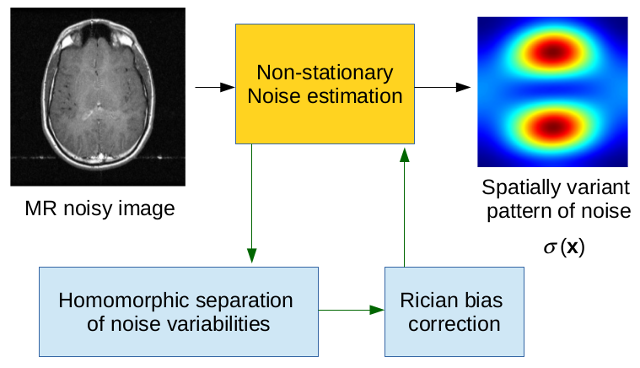New noise estimation method published in MEDIA

Spatially variant noise estimation in MRI: A homomorphic approach
Abstract: The reliable estimation of noise characteristics in MRI is a task of great importance due to the influence of noise features in extensively used post-processing algorithms. Many methods have been proposed in the literature to retrieve noise features from the magnitude signal. However, most of them assume a stationary noise model, i.e., the features of noise do not vary with the position inside the image. This assumption does not hold when modern scanning techniques are considered, e.g., in the case of parallel reconstruction and intensity correction. Therefore, new noise estimators must be found to cope with non-stationary noise. Some methods have been recently proposed in the literature. However, they require multiple acquisitions or extra information which is usually not available (biophysical models, sensitivity of coils). In this work we overcome this drawback by proposing a new method that can accurately estimate the non-stationary parameters of noise from just a single magnitude image. In the derivation, we considered the noise to follow a non-stationary Rician distribution, since it is the most common model in real acquisitions (e.g., SENSE reconstruction), though it can be easily generalized to other models. The proposed approach makes use of a homomorphic separation of the spatially variant noise in two terms: a stationary noise term and one low frequency signal that correspond to the x-dependent variance of noise. The non-stationary variance of noise is then estimated by a low pass filtering with a Rician bias correction. Results in real and synthetic experiments evidence the better performance and the lowest error variance of the proposed methodology when compared to the state-of-the-art methods.
